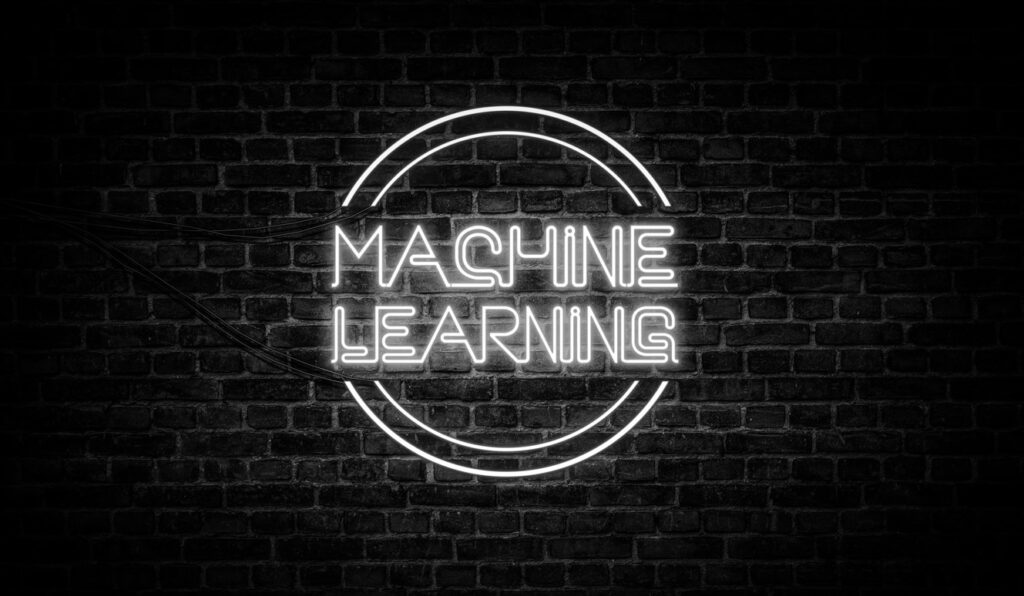It’s no secret that today’s supply chains are being forced to step up their game in a major way. Operating a supply chain has always required continual decision-making that best prepares you for today, tomorrow, and the months and years to come.

The increased pace of change and complexity of supply chain operations has increased the importance of these decisions in a major way. Whether you use tribal knowledge, rules, logic, or sophisticated algorithms to make these decisions, the more accurate your picture of the future, the better your decisions (and therefore your bottom line) will be.
While supply chain professionals have been applying predictions to their decisions for many years, now there is science that improves these predictions many times over. Machine learning, or algorithms that learn from data, might be a term you have heard before, perhaps one you already associate with predictions. But how does it help improve our decisions?
In short, machine learning (ML) unlocks higher-quality and more timely predictions. These huge leaps in intelligence and speed also create fundamentally new ways to attack business problems of all kinds. Let’s take the rest of the blog to unpack this with examples:
1) Predicting Stockouts and Intelligent Replenishments
Picture yourself as an inventory planner for a large retailer. You’re in a Monday afternoon planning meeting with the supply and demand planners. While following your typical process of reviewing the current inventory, the supply plan, and the demand plan, you realize that you are not taking into account many factors that could greatly impact your decisions for the upcoming week. What about lead time variability, warehouse performance, carrier delivery performance, recent stockouts of similar SKUs, internet search traffic, or channel mix? You know that relying on the demand forecast alone is no longer sufficient – what would really help you is a prediction that takes all of the supply and demand uncertainties into account and delivers a list of stockouts that are likely to take place as a result.
The truth is, that without ML, you have no way to incorporate the granular information required to produce high-quality predictions that can greatly influence your service levels, transportation costs and many other business KPIs. ML algorithms are not only good at detecting patterns in drivers of stockouts, but can do so even in specific SKU/channel/store/week combinations. This granularity gives planners the ability to switch from rule-based replenishments to data-driven, automated, more accurate, and more granular replenishment decisions.
2) Improving Customer Promise Dates

Let’s consider another example. Imagine you’re on the order management team of a large CPG company. You have been tasked with improving the accuracy of customer promise dates.
The calculation of a promise date requires accounting for uncertainty in many factors: production and supplier lead times, demand forecasts, potential rush orders, transportation capacity availability, and warehouse capacity (labor, space and equipment).
Given the number of variables involved, you have developed a custom of simplifying this calculation by taking several averages and adding rule-based buffers to protect against uncertainties, sacrificing accuracy for the sake of getting a plan in place.
Sacrifice no longer. With ML, one can actually predict the best achievable promise date for each order by accounting for the state of all processes in the supply chain, resource stress and performance trends, as well as external factors like weather, traffic and transportation carrier service levels.
3) Improving Product Segmentation
ML can also help by testing new operational tactics. Supply chain planners commonly group customers into segments based on descriptive attributes like size, geography or product mix. One of the purposes of this exercise is to define and manage policies that guide operational decisions. A sourcing policy, for example, can be defined as “frequently ordered items should be sourced from a regional fulfillment center, other products from the central warehouse.” This works to a degree, but the definition of the segment of customers who order frequently tends to be limited and static.
In this instance, ML changes the game once again with its ability to create segments that account for characteristics like ordering behaviors (frequency, recency, product mix) and location attributes (transportation capacity availability, or store density). Additionally, these segments can be dynamically generated on demand or on a predetermined cadence to account for seasonality, promotions, or evolving demographic patterns. These segments can then become inputs to more granular sourcing policies, which help balance transportation costs and service levels. Without ML, planners continue using the legacy customer segments and lose out on identifying new ways of managing their business that could drastically improve KPIs.
4) Better Capacity Utilization
When a warehouse is loading trucks and they notice that a truck is going to ship half-empty, what is the best product to ship that can use that empty space? Traditionally, the best response is to substitute it with the highest-volume product, or simply let the truck go underutilized. Instead with ML, the load-building process can get a recommendation from a list of products predicted to stock out in order to fill up that truck. ML can help create new points of intervention to improve supply chain outcomes.
In all these examples ML enables:
A Different Kind of Speed
More intelligence is great, but it means nothing if you can’t access it at the exact right time in your operations. As an inventory planner, there’s just not enough time in your day. The process of digging into why a stockout took place is tedious and time-consuming, an analysis often resulting in resistance from those in operations who would rather write it off as a one-time occurrence.

ML is the exact prescription to that resistance. Think of machine learning like a muscle that is driven to continually strengthen at a very low cost, a muscle you can flex to quickly reveal patterns in your stockout events, like increases in lead times due to labor shortages. With information this detailed, you can act with foresight to prevent future stockouts, or recognize and mitigate them before they cause substantial harm.
Without the speed of ML, you are also limited to actively managing a small number of SKUs. For all your other products, you must trust that broad, rule-based approaches (or even time) will handle the rest. With ML, timely predictions at granular levels empower you to automate ongoing replenishment decisions for a bigger share of your SKU-store portfolio. You can now trust that your models will adjust and improve by learning from your data on a continuous basis. As the pace of change in the world continues to rise, ML has become a necessary tool in order to keep up.
A Different Kind of Decision
Without ML, planners are often at the mercy of a very short idea list when it comes to addressing performance issues. ML extends your capabilities to more accurately predict the future at the level of granularity at which your business operates, creating a whole new level of intelligence. This depth, along with the speed of ML, offers you the ability to uncover new ways of identifying and adjusting operational levers, choices never before considered or even considered to be related to the issues at hand.
The idea that every decision can and should be reframed in the context of a prediction problem is core to our own work philosophy for many years. The decisions we make are only as good as the inputs we use to make them. Machine learning opens countless new doors with its ability to dig through data deeper and faster to improve decision-making all throughout the supply chain.
So how valuable is all of this? Think of it this way: what if you were offered a brilliant virtual assistant who did all the dirty work required to improve your decisions each and every day? When set up correctly, ML is very similar: it acts as a constant extension of your abilities. What information would help me improve this prediction? If I had more time, what additional ideas would I evaluate? If I had more levers, what would be the best information to help activate those levers? These questions can be answered with machine learning, the virtual assistant that trains itself (with a little help from data scientists, of course). ML for supply chain will likely become the best virtual assistant your company has ever invested in, helping you and your team be better, faster, and more innovative than ever before.



